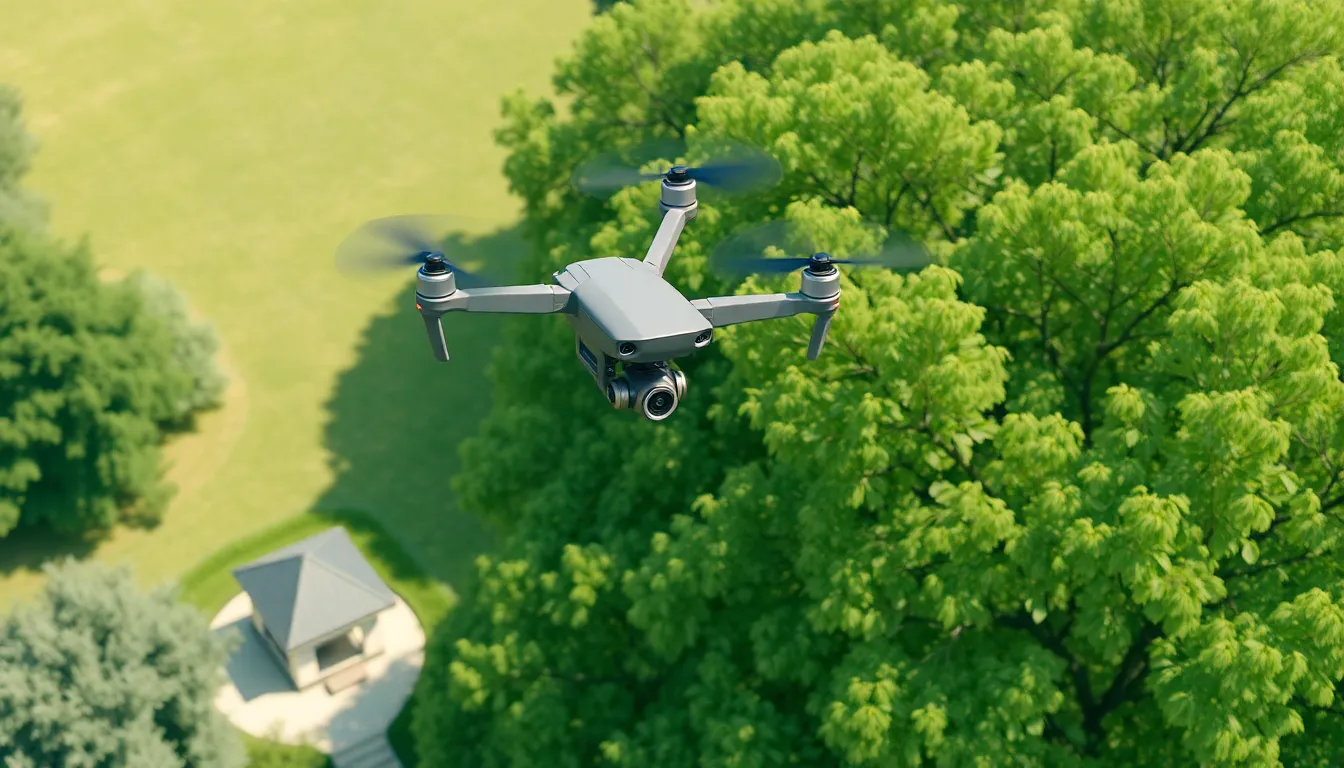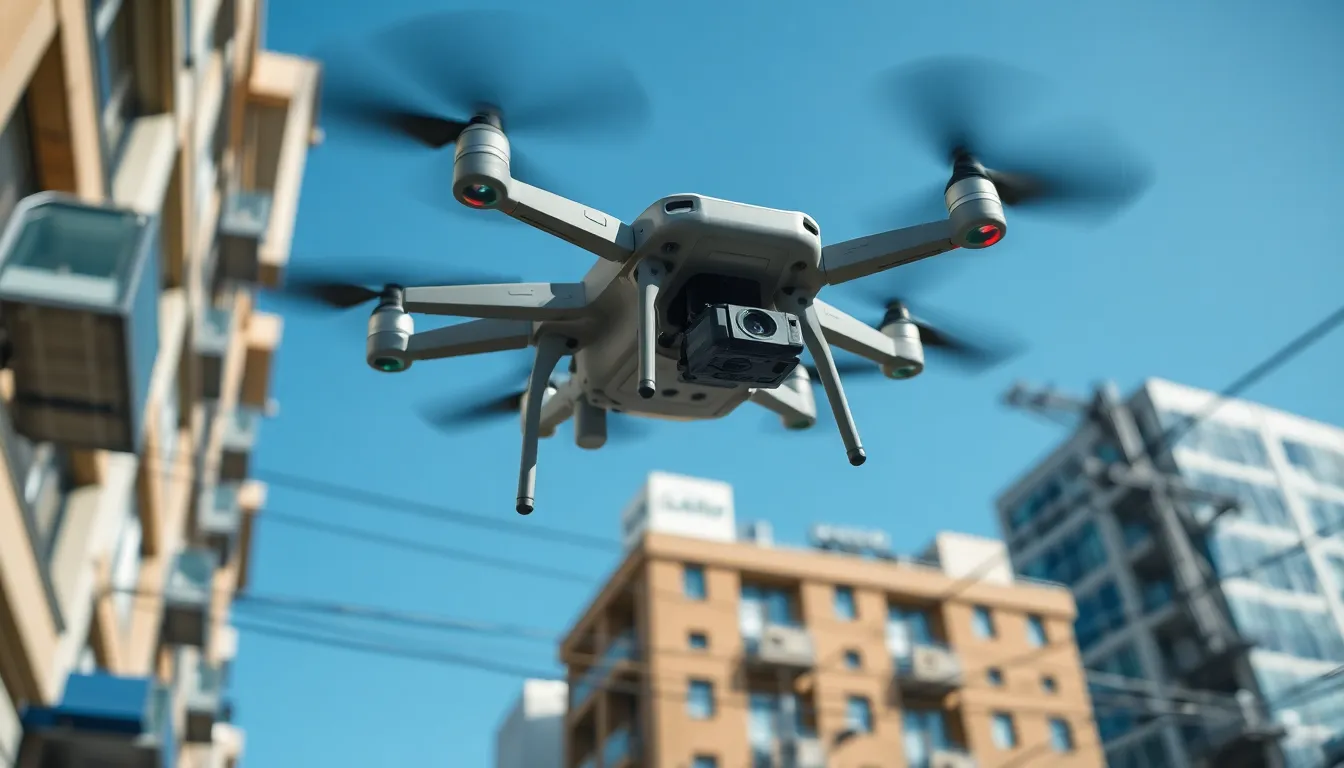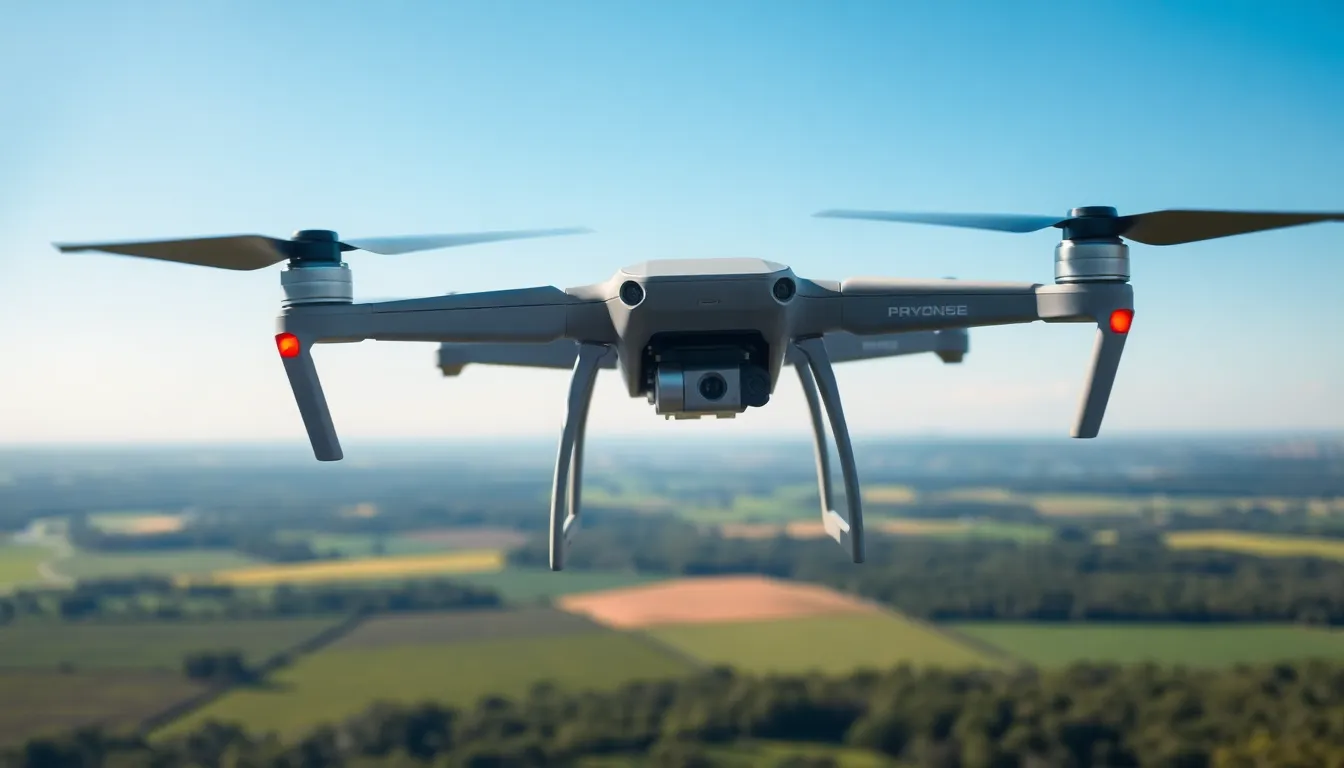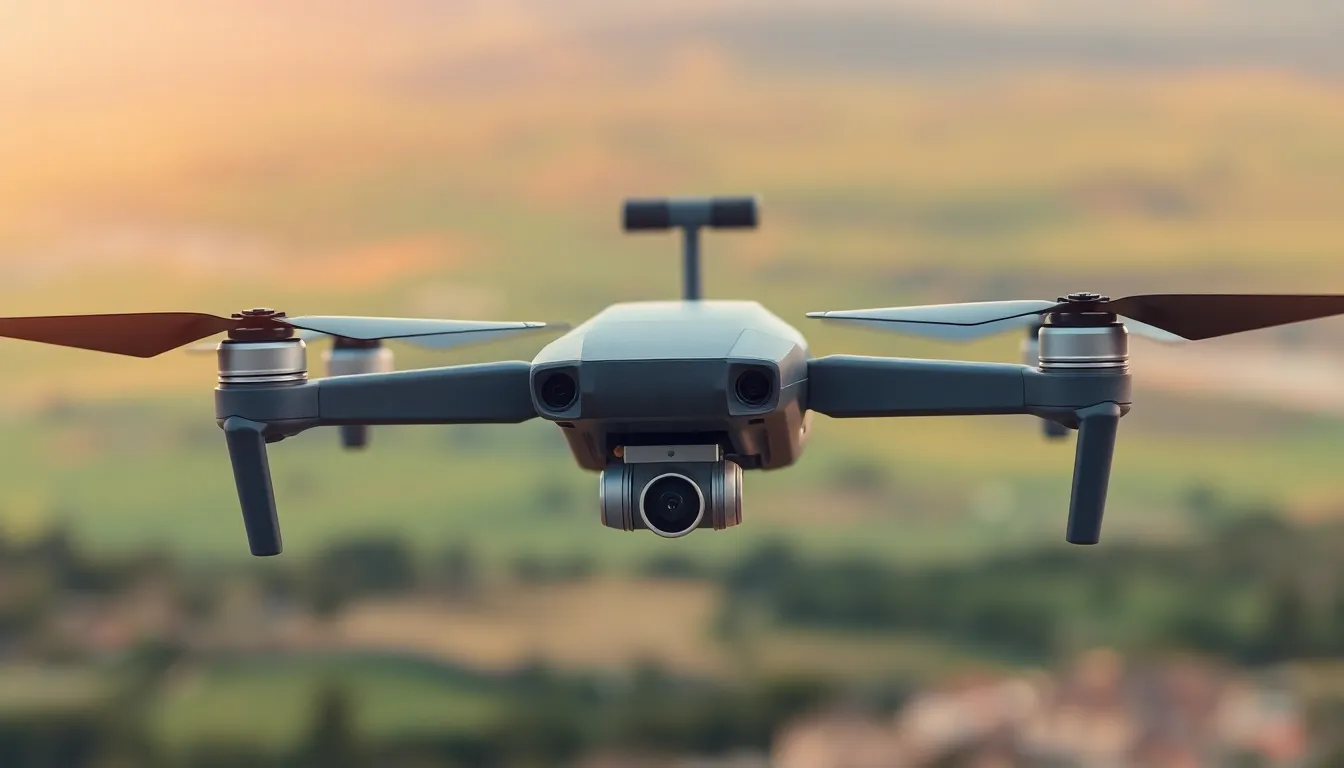In a world where drones are becoming the new superheroes of the skies, obstacle avoidance technology is their trusty sidekick. Imagine sending your drone on a mission, only to watch it crash into a tree like a clumsy bird. Not cool, right? That’s where obstacle avoidance swoops in to save the day, ensuring smooth flights and fewer embarrassing mishaps.
With advancements in sensors and AI, today’s drones can dodge obstacles like a pro athlete on a field. They navigate through tight spaces and avoid pesky power lines, making them the ultimate aerial companions. Whether it’s for recreational fun or professional use, understanding how these systems work can elevate any drone experience from “oops” to “wow!” Get ready to explore the fascinating world of drone obstacle avoidance and discover how it transforms the skies into a safer playground.
Table of Contents
ToggleOverview Of Drone Obstacle Avoidance
Drone obstacle avoidance technology plays a crucial role in ensuring safety during flight. This technology prevents potential collisions with objects, making aerial navigation more reliable. Advanced sensors, such as LiDAR and cameras, facilitate real-time detection of obstacles within the drone’s path.
Artificial intelligence algorithms interpret sensor data to determine the best course of action when an obstacle is detected. Drones equipped with these features can autonomously change direction or altitude to maneuver around challenges. Enhanced object recognition capabilities enable drones to identify various hazards, including buildings, trees, and power lines.
Several manufacturers integrate obstacle avoidance systems into their drone designs. DJI’s Phantom and Mavic series feature these advanced systems, providing users with a safer flying experience. The Parrot Anafi also utilizes similar technology, showcasing its effectiveness in different environments.
Regulatory bodies recognize the importance of obstacle avoidance in commercial drone operations. Statistics indicate that drones without these measures are more likely to experience accidents. By adopting state-of-the-art obstacle avoidance systems, operators can significantly reduce incident rates during flights.
Drone obstacle avoidance technology transforms flying experiences for both hobbyists and professionals. It bolsters confidence in autonomous flight, expanding the possibilities of drone applications across various industries.
Key Technologies Used In Drone Obstacle Avoidance

Drones rely on various advanced technologies for effective obstacle avoidance. These systems enable safer navigation in diverse environments.
Computer Vision
Computer vision technology empowers drones to interpret and understand visual information from their surroundings. High-resolution cameras work alongside image processing algorithms to identify obstacles like trees or buildings. Through real-time analysis, drones assess distances and classify objects. Enhanced object detection contributes to timely response actions, such as adjusting flight paths. Manufacturers implement robust computer vision systems to increase safety, making them essential for autonomous flying. For instance, drones equipped with this technology can navigate complex environments, including urban landscapes more seamlessly.
Lidar Sensors
Lidar sensors leverage laser beams to measure distances to surrounding objects. This technique generates a precise 3D map of the environment, allowing drones to detect obstacles with high accuracy. Many models incorporate rotating lasers to scan areas multiple times per second. This rapid data collection facilitates instant decision-making, ensuring drones adapt to changing surroundings. Major drone manufacturers utilize lidar technology for various applications, including agriculture and surveying. Ultimately, lidar enhances situational awareness, reducing the risk of collisions significantly.
Ultrasonic Sensors
Ultrasonic sensors utilize sound waves to measure distances, providing another layer of obstacle detection. Operating at high frequencies, these sensors emit sound pulses that bounce off nearby objects. The system calculates the time it takes for the echoes to return, determining object proximity. Many drones integrate ultrasonic sensors for low-altitude operations, particularly in tight spaces. This technology improves safety during landing and takeoff, where obstacles are more prevalent. The combination of ultrasonic sensors with other technologies, such as computer vision, results in more reliable obstacle avoidance solutions.
Challenges In Drone Obstacle Avoidance
Drone obstacle avoidance presents several challenges that impact performance. These challenges stem from environmental factors and technical limitations that affect navigation.
Environmental Factors
Weather conditions pose a significant challenge to drone operation. Heavy rain, snow, and fog can obstruct sensors, reducing detection capability. In urban areas, obstacles like buildings and power lines create complex environments that demand precise navigation. Changes in sunlight, particularly glare and shadows, complicate obstacle detection by impacting sensor performance. Surface reflections can mislead sensors, creating potential hazards for drones. Additionally, variations in terrain, such as uneven or rugged landscapes, influence flight paths, requiring advanced algorithms to adjust movements effectively.
Technical Limitations
Technical limitations also play a critical role in drone obstacle avoidance. Sensor range often affects detection effectiveness; some sensors struggle to identify obstacles beyond certain distances. Latency issues can arise when processing data, impacting real-time decision-making. Drones equipped with low-quality cameras may struggle with object recognition, resulting in unreliable navigation. Algorithms require continuous improvement; despite progress, they can misinterpret complex scenarios, leading to errors. Sensor fusion, while beneficial, introduces challenges in integrating data from multiple sources, potentially reducing accuracy. Addressing these technical limitations is essential for enhancing obstacle avoidance performance in drones.
Future Trends In Drone Obstacle Avoidance
Innovations in drone obstacle avoidance continue to evolve, driven by advancements in technology and regulatory frameworks. The focus on safety and efficiency in drone operations will shape these emerging trends.
Artificial Intelligence Integration
Artificial intelligence plays a pivotal role in enhancing drone obstacle avoidance capabilities. AI algorithms process data from various sensors to improve obstacle detection accuracy. Advanced machine learning models enable drones to adapt to new environments in real-time, facilitating better decision-making. As AI systems learn from past flights, they contribute to continuous improvement in navigation strategies. This capability significantly reduces collision risks, ensuring safer operations in complex landscapes.
Regulatory Developments
Regulatory bodies are increasingly recognizing the significance of obstacle avoidance systems in drone safety. Legislation is evolving to mandate these technologies for commercial drone operations. New guidelines focus on ensuring that drones equipped with obstacle avoidance systems comply with safety standards. As regulations tighten, manufacturers are compelled to integrate innovative solutions in their designs. This proactive approach encourages the adoption of state-of-the-art technology in the industry, further enhancing aerial safety and reliability.
The evolution of drone obstacle avoidance technology marks a significant leap in aerial safety and efficiency. As advancements in sensors and artificial intelligence continue to unfold, drones are becoming increasingly adept at navigating complex environments. This not only enhances user confidence but also expands the potential applications across various industries.
With regulatory bodies recognizing the necessity of these systems, manufacturers are compelled to innovate further. The future promises even smarter drones capable of adapting to diverse conditions while ensuring safe operations. Embracing these technologies paves the way for a safer and more reliable drone experience.





